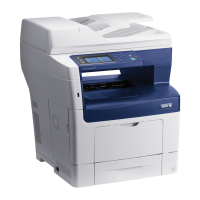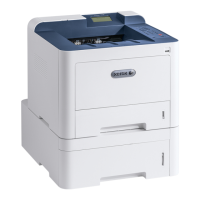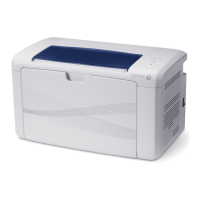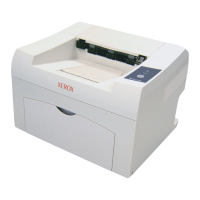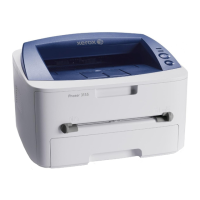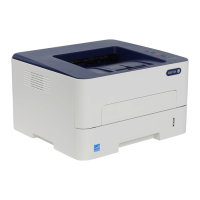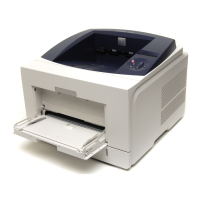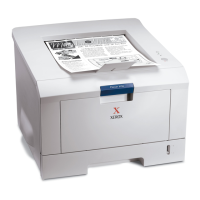Phaser 3600 Printer Service Manual 2-7
Theory of Operation
Laser Scan Unit (LSU)
The Laser Scan Unit (LSU) is the core element of the image production
process. The LSU receives video data from the controller on the Main Board
and converts the data to an electrostatic latent image on the OPC (Organic
Photo Conductor) drum. The laser beam exposes the OPC drum under
direction of the controller. The controller also turns the drum synchronously
with a polygon mirror within the LSU. The OPC drum also turns in relation to
the speed of the paper feed process. An /HSYNC signal is created when the
laser beam from LSU reaches the end of a polygon mirror, and the signal is
sent to the controller.
The controller detects the /HSYNC signal to adjust the vertical line of the
im
age
on paper. That is, after the controller detects the /HSYNC signal, the
image data is sent to the LSU to adjust the left margin of the media.
Motor Drive Assemblies
The Motor Drive Assemblies include the Main Motor and the Developing
Motor. Under control of the Main Board, the Main Motor Drive is a power
delivery unit. Through a series of gears, it supplies the power to the paper
feed components, the fusing unit, and the distributing unit. For the duplex
process, the Main Motor energizes a solenoid to change paper direction.
By gearing, the main motor drives the rollers such as Feed Roller, developing
r
oll
er, fuser roller, and Exit Roller. In addition, a step motor controls the
acceleration of the drive gearing.
The Developing motor also drives gears that, in turn, drive components used
in the
image development process.
Feed Assembly Process and Components
The Feed assembly process and components consists of:
1. Separation process
Se
parates the paper from the friction pad mounted to the center of the
cassette and applies a Retard Roller which uses a spring clutch. A
separate Feed Roller then uses an electronic clutch to control driving
power.
2. Center Loading Process
A center loading method applies 'friction pad separation’, which means
that a software process first detects paper (even though there is a paper
sensor). After the initial detection, the Paper Size Sensor determines
paper size (see “Paper Size Sensor” on page 2-16).
Both the side guide and the rear guide can be adjusted for various types
of papers from A5 to legal size paper. The process also includes a paper
arranging function and a display function displays the amount of paper
remaining. In the front side of the tray, there is a paper level indicator.
3. Paper Pick-up Process
Functions include a paper pickup function, paper feeding function, and the
removal of electronic static.
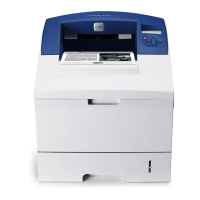
